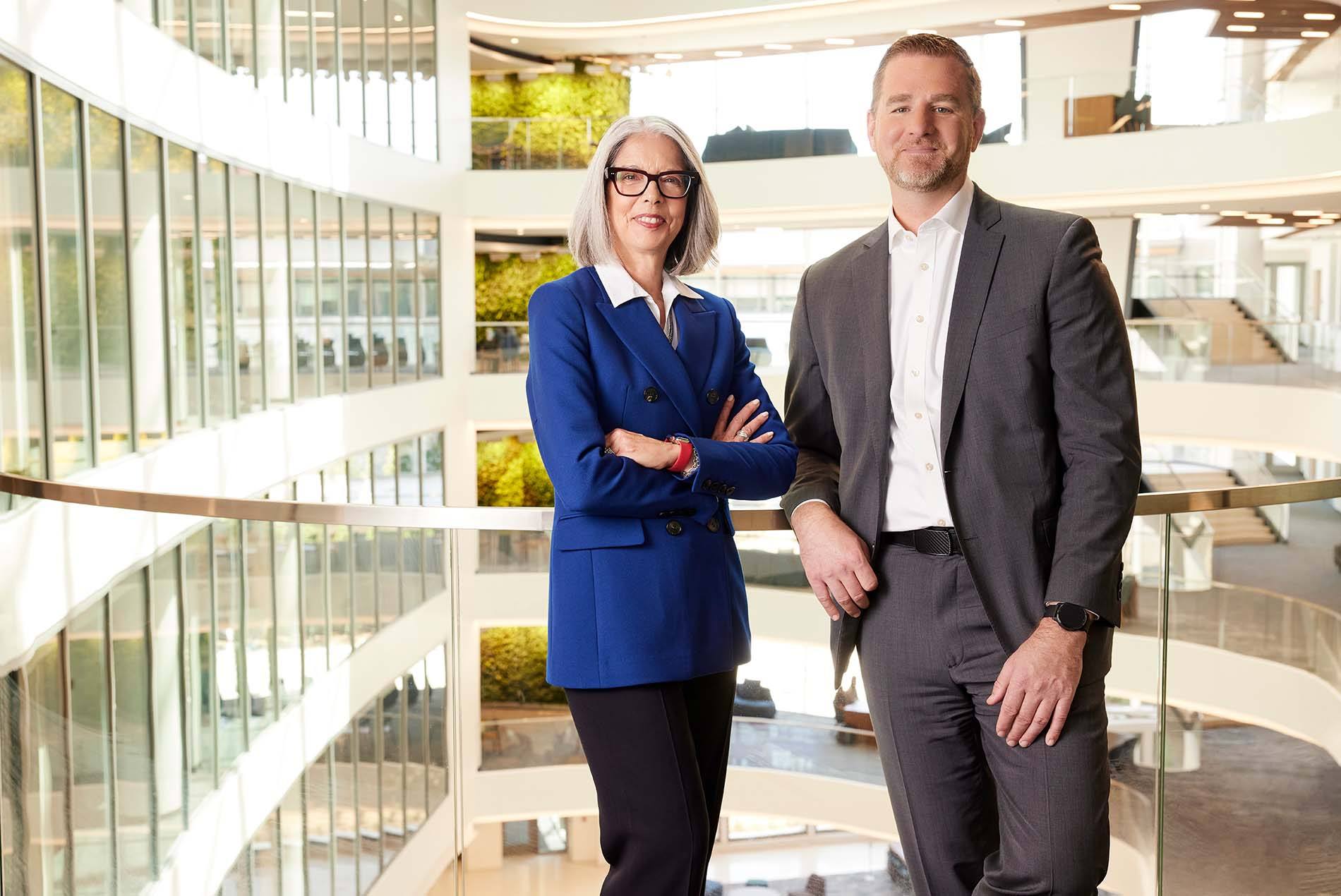HOK co-CEOs Eli Hoisington and Susan Klumpp Williams discuss challenges and trends they predict will most impact the architecture and construction industry in 2024. These include ongoing office vacancies, climate change, artificial intelligence and geopolitical factors.
Here’s the good news: The architecture, engineering and construction (AEC) industry remains robust entering 2024. This is particularly true in the non-residential sector, which has rebounded sharply from the pandemic and is expected to continue its upward trajectory.
Yet for all its recent growth, the AEC industry faces several internal and external hurdles. For insight, we asked HOK’s co-CEOs, Eli Hoisington and Susan Klumpp Williams, to weigh in on the issues they’re keeping an eye on this year.
An evolving commercial market: Hoisington and Klumpp Williams see several commercial markets remaining strong into 2024, especially healthcare buildings and facilities supporting science and technology. Office building vacancies, however, will remain a challenge, requiring firms like HOK to devise solutions that extend beyond just residential conversion.
“As an industry, we need to become more creative about adaptive reuse and repositioning existing assets for a variety of new uses,” said Hoisington. “These older buildings have so much to offer in terms of how they were built, often in ways we would rarely consider today. This makes for a unique opportunity for many of our clients. And unique matters, right now, when looking at real estate options.”
Increased calls for sustainability: In the not-so-distant past, architects often found themselves having to lobby clients to integrate sustainable design into their projects. That dynamic has rapidly changed as more owners prioritize sustainability. This is due to a host of reasons, including stakeholder demands, an urgency to get ahead of future local, state and other governmental regulations and increasing threats of extreme weather associated with climate change.
“The integration of resilience and sustainability is very important to our clients,” said Klumpp Williams. “Beyond ensuring their projects are as energy-efficient as possible, clients need to know that their hospitals, labs, arenas and other venues will remain operational or quickly reopen following unexpected climate and other impactful events.”
Artificial intelligence as a design tool: AI-powered design software will continue to evolve in 2024. Far from being a job-killer, as some have predicted, HOK’s co-CEOs see AI as a tool that will help architects close the profession’s sizeable labor shortage.
“The idea of AI as a looming threat to our profession isn’t the thing keeping me awake at night,” said Hoisington. “What does is the shortage of experienced talent in architecture that traces its roots back to all the people who left during the 2008-2009 recession. If AI can increase the bandwidth of our architects and design leaders to fill this gap, I see that as incredibly valuable by enabling our leaders around the practice to affect a larger part of the industry while we mentor and train new leaders.”
Economic and geopolitical instability: Numerous political and economic factors will influence the AEC industry in 2024. Despite an easing of inflation and interest rates in late 2023, rates could rebound in 2024 for a variety of geopolitical reasons, including the outcome of another contentious U.S. presidential election, an economic cooldown in China, ongoing wars in Ukraine and Israel, and new global challenges.
“As a global firm, we always keep tabs on outside factors impacting our clients and colleagues,” noted Klumpp Williams. “We take a ‘watch and wait’ approach but remain inherently optimistic about the future and our ability to adapt and respond.”
